Winter hiking is a great way to beat cabin fever. Seeing already beautiful landscapes covered in a fresh coat of powder makes it even better. Popular trails and tranquility don’t normally go hand in hand, but winter hiking can mean much less traffic on the trail and make it possible to have both.

This post may contain affiliate links, I may earn a commission at no additional cost to you.
Table of Contents
How to Plan a Winter Hike
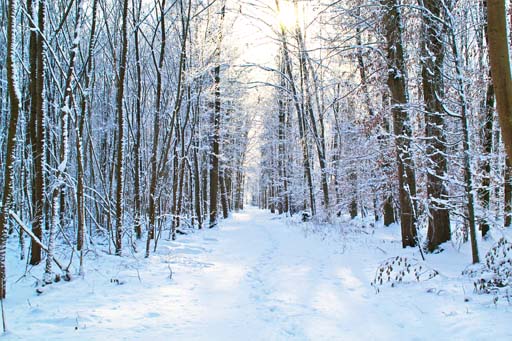
What to Look for in a Winter Hiking Trail
Completion Time and Hours of Daylight
The estimated completion time. Daylight hours in winter are more limited so unless you plan to hike in the dark, keep in mind the daylight hours for your area. You’ll also want to take into account that winter hiking can take longer than the same hike in other seasons. This is especially true if there is deep snow.
TrailsNH has a handy calculator you can use to estimate the completion time of trails you’re considering.
Elevation
Snowpack
Plan Ahead for Safety
Check the Conditions
Check the weather conditions in the area you’ll be hiking. This will give you some insight into what you may encounter. For example, if there was any rainfall followed by low temperatures, you may have some icy trail sections to deal with.
Wind speed
Winds can start to affect a fit adults ability to walk at just 30-40 miles per hour. The higher the elevation, the more likely you are to encounter strong winds. The NOAA has graphical maps that show wind speeds and gusts.
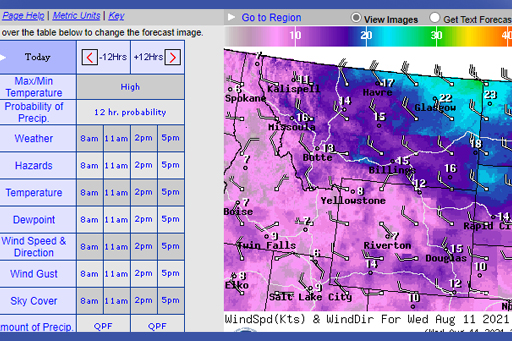
Know the Terrain
Study your map carefully. You should know that higher elevations have a greater chance of harsher conditions than lower elevations. The weather/conditions at the bottom of a mountain do not reflect what the conditions may be at the top. The closer you get to the summits the windier, colder, and (usually) deeper the snowpack gets. If you’ve never hiked in winter before, try to stay with lower elevations before attempting to conquer very high ones.
Have an Emergency Plan
It’s scary to think about something going wrong on your hike, but sometimes they do. Having a plan in place can help you react more quickly and safely if things do head south. Get together with your hiking partner or group and figure out some bail out points along your route. These bail out points should help you access help quickly.
Also talk about and agree on what would make you turn back and end the hike, such as weather looking as if it’ll turn bad fast.
Figure out what you’ll do in emergency situations. What will you do if someone gets hypothermia or injures themselves too badly to walk? Will you use a PLB (personal locator beacon) to notify rescuers or another type of communication?
What to Wear on a Winter Hike
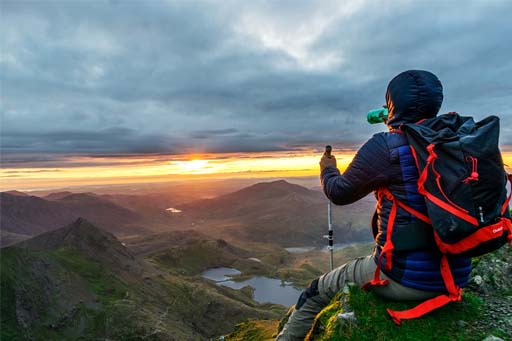
Start by making sure you’re dressed appropriately. Tight clothing can inhibit circulation and make you feel colder as well as increase your chances of frostbite, so a looser fit will help out here. You also want to be warm but not sweating and getting your clothing wet. Keep in mind that when you’re just getting started for the day, you’ll probably be a little colder but warm up quickly as you hike. If you dress for the cold you feel at the beginning, you may need to remove a layer as you warm up to prevent sweating.
Winter Clothing Layers for Hikers
Wearing proper layers is essential to staying comfortable on your adventure. Great hiking layers consist of 3 parts.
Base Layer
You’ll want a moisture wicking base layer to help you stay dry and comfortable.
Mid Layer
This layer is your insulator. You have choices ranging from fleece pullovers to insulated jackets.
Outer Shell
Outer shells help keep the weather out. When hiking in winter, you’ll want a waterproof outer for your top and bottom.
For women, I love my Arctix Insulated Snow Pants. They were one of the first pair of bottoms I purchased and, even after adding to my winter hiking wardrobe, I use them frequently. They’re durable, fit nicely, on the lower end of the price spectrum, and are not too stiff like some snow bottoms can be. They also come in 20 colors/patterns so you’re sure to find a pair you love!
Cover Up Your Skin
Covering exposed skin while hiking in the cold will help prevent frostbite and prevent heat loss.
Layer your gloves. Try wearing fleece gloves under waterproof gloves or mittens to help keep your hands and fingers toasty.
To cover your face and neck, using a neck gaiter as a face mask works wonders, as does a balaclava.
A Hat! You lose a lot of heat through your head. Wearing a hat will help keep your entire body warmer.
Gaiters. Ok, so gaiters don’t technically cover your skin, but they do help keep snow out of your boots which helps keep your feet warm and dry
What to Pack for a Winter Hike
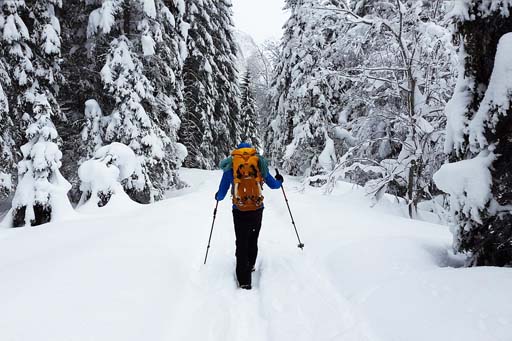
10 Essentials
If you’re already packing the 10 essentials on day hikes, you know that you don’t always use everything on the list and may feel like its unnecessary weight or a waste of pack space to bring it all. But the list was designed to help you be prepared for if things were to go south, and can help save your life if they do.
Navigation- A map and compass and the knowledge you need to use them.
Lighting- A headlamp or flashlights and extra batteries for whichever you choose. Cold drains batteries quickly, so keeping them in a pocket close to your body will help keep them warm.
Sun Protection- Sunglasses especially if there’s a blanket of snow, and sunscreen
First Aid Kit
Knife and gear repair kit
Matches, lighter, fire starter or a stove
Emergency shelter such as a bivy.
Extra food
Extra Water
An extra layer of warm clothing, including socks and gloves
Other Gear for Winter Hiking
Microspikes or crampons to give you more traction
Trekking Poles can help stabilize you on uneven ground and you can stick one in the snow to see how deep it is before you step.
Snowshoes if you’ll be traversing in deep snow
Eating and Drinking in Cold Weather
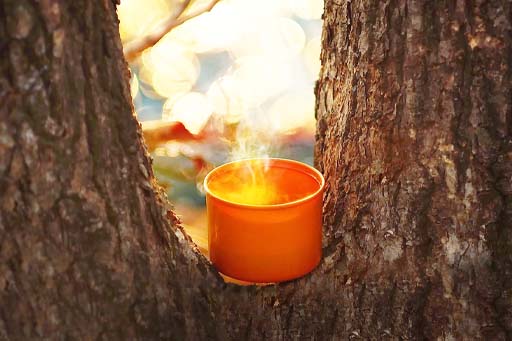
What to Eat
Before you head out, you’ll want to eat a balanced breakfast. Not only will you not be starting hungry, but eating before hitting the trail can help keep you warm. Eat a meal high in protein, fat, and calories.
On trail, you’ll want to continue the high protein/fat/calorie as you did before you left. Cheese (cut it before you leave!) and trail mix are good options. Snickers of course are great too, as well as protein bars. Be aware they may freeze, so keep them closer to you in a jacket pocket or something for a bit before eating.
Bring some foods that are easy to eat while moving. Stopping for too long can make you cold so trail ready foods are handy and can limit the time you need to be inactive.
Staying Hydrated
Dehydration happens even in cold weather and since being dehydrated can affect your circulation, it can lead to a greater risk of hypothermia. Keep up on your water intake like you normally would.
At Camp
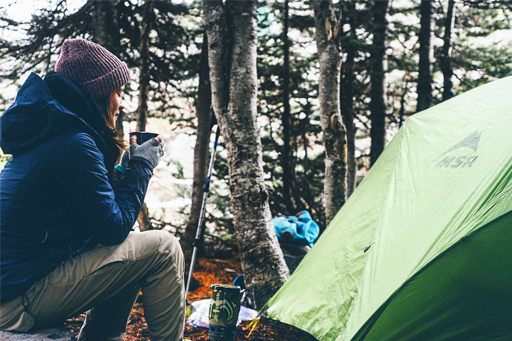
Have the Proper Gear for the Weather
Sleeping Bag
A sleeping bag is arguably the most important gear item you’ll use to keep warm. It’s your home inside your home, your cocoon. Ensuring you have the proper sleeping bag for the weather will go a long way in keeping you comfortable when it’s time for bed.
When choosing your sleeping bag, remember that temperature rating is for survival, not comfort. A 20 degree sleeping bag is designed to keep you alive at 20 degrees and will leave a lot us cold at that temperature. If you don’t want to purchase a bag for colder temps, there are a couple ways you can increase the warmth of your current bag.
Add a liner. A liner can generally add 5 to 30 degrees to the temperature rating, but some claim over 40 degrees.
Utilize a space blanket. Placing the blanket over your sleeping pad and under your sleeping bag can help reflect heat back toward you. You can also use the space blanket inside your sleeping bag, but this can cause condensation and a damp/wet bag, so use caution if you go this route. It’s harder to dry out a sleeping bag when it’s cold. A downside to using this trick is that the blankets can be noisy. Though it’s not unlike the noises some sleeping pads make, it can be annoying nonetheless.
Sleeping Pad Made for the Cold
A sleeping pad with a high R-Value will add a good insulating base to your sleep set up.
Choosing a Cold Weather Campsite
Utilize natural shelters. Large stones, evergreen trees, and “dirt hills/walls” can all serve as precipitation and wind blocks. Just be sure to look for any dangers, such as dead branches that could fall, before setting up camp.
Choose a site mid-elevation. Cold air descends, so the bottom of a ravine or valley can be cooler than higher ground and also serve as a wind tunnel. Higher elevations can be more exposed and have relentless cold winds chilling you through the night. Look for a spot mid elevation to prevent both.
Preventing Winter Illness and Injury When Hiking in the Cold
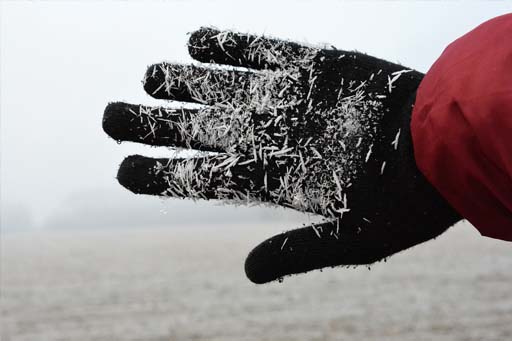
Hypothermia
Symptoms of Hypothermia
- Shivering
- Slurred Speech
- Coordination gets worse
- Drowsiness
- Confusion
- Slow, shallow breathing
Risk Factors
- You’re very tired or out of energy
- Alcohol Use
- Some Medical Conditions
Prevention
We covered these tips a little earlier in this post, but it doesn’t hurt to sum it all up with an easy to remember acronym. Just think C.O.L.D.
Cover (your head, face, and neck)
Overexertion, Like I mentioned above when we talked about layering, sweating combined with the cold can cause a quick loss of body heat.
Layers. Loose, moisture wicking layers combined with a waterproof shell will help keep you both warm and dry.
Dry. Be wary of snow getting into gloves or boots. Gaiters really do come in handy for keeping it out of footwear. If your clothing does get wet, change into dry clothes as soon as you can.
Frostbite
Symptoms
- Cold skin
- Prickly feeling- this alongside cold skin are two o f the first signs
- Odd coloring. Skin can be bluish white, grayish yellow, or red or white.
- Hard or waxy look to your skin
- Clumsiness
Preventing Frostbite While Hiking in Winter
Keep an eye on the wind conditions. Frostbite can happen in minutes in super windy conditions.
Dress in layers. I feel like a broken record saying that for the third time but it really is one of the most important ways to stay warm and have an enjoyable, frostbite-free winter hike
Watch for signs of frostbite. If you notice any of the early ones, go warm up somewhere. Red pale skin, numbness, and/or a prickly feeling are all signs you should seek shelter for at least a little while.
Carry your safety gear. Your 10 essentials can become lifesaving in harsh winter conditions and you’ll be glad you have them if you need them.
Like this Post? Pin it for later!

Related Posts